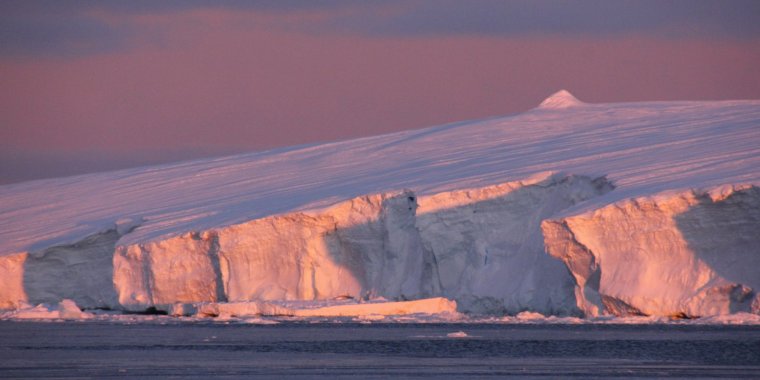| News / Science News |
Massive East Antarctic Ice Sheet has history of instability
The East Antarctic Ice Sheet locks away enough water to raise sea level an estimated 53 meters (174 feet), more than any other ice sheet on the planet. It's also thought to be among the most stable, not gaining or losing mass even as ice sheets in West Antarctica and Greenland shrink. But new research, led by The University of Texas at Austin and the University of South Florida (USF), found that the East Antarctic Ice Sheet may not be as stable as it seems.

Sunset on the Sabrina Coast, East Antarctica. Image credit: Steffen Saustraup, University of Texas Institute for Geophysics
In fact, the ice sheet has a long history of expanding and shrinking -- a finding that indicates the ice sheet may contribute substantially to global sea-level rise as Earth's climate warms.
The study found that glaciers from the Aurora Basin have been stable for only the last few million years.
Using marine seismic technology deployed from an ice breaker, researchers were able to reconstruct how glaciers on the Sabrina Coast have advanced and retreated over the past 50 million years.
The team also took core samples of mud from 1 to 2 meters below the seafloor and analyzed ancient pollen to determine the age of the samples.
The Sabrina Coast and nearby Aurora Basin are particularly important because regional glaciers are now thinning and retreating as nearby ocean waters warm. If the ice sheet in the Aurora Basin melted, global sea levels would rise more than 3-5 meters (10-15 feet).
According to the team's data, ice advanced from the Aurora Basin and retreated again at least 11 times over the first 20 million years of the ice sheet's history.
Researchers also found that the young ice sheet was much wetter than it is today, with meltwater from the surface flowing into a network of channels beneath the ice.
These channels were eroded into the rock below the ice, leaving distinctive formations known as "tunnel valleys." This dynamic time for East Antarctic glaciers occurred when atmospheric temperatures and atmospheric carbon dioxide levels were similar to or higher than present day levels.
Around 6 million years ago, the East Antarctic Ice Sheet expanded, stabilized and ceased producing large volumes of meltwater.
However, as climate change raises global air temperatures, it is possible that East Antarctic glaciers could start melting, a change that could make the ice sheet shift back into unstable territory. (National Science Foundatio)
YOU MAY ALSO LIKE





